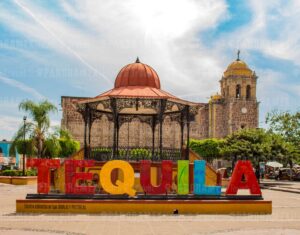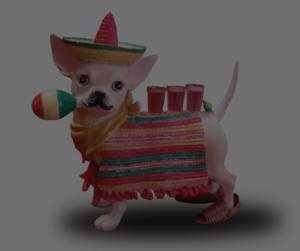 202 km/126 miles – This is a shorter drive than many and almost all of it will be on either a Bypass or Hwy 15D! We are headed for the Campadritos RV Park & Cabanas (GPS 20.77301 N, 104.06472 W) located in Etzatlán at 4500′. Formally called “Delia’s” the family also owns and operates an RV Park in Rincon de Guayabitos. Years ago many Americans leasedlots at this rancho, built permanent homes and spent winters here in the farming community.
202 km/126 miles – This is a shorter drive than many and almost all of it will be on either a Bypass or Hwy 15D! We are headed for the Campadritos RV Park & Cabanas (GPS 20.77301 N, 104.06472 W) located in Etzatlán at 4500′. Formally called “Delia’s” the family also owns and operates an RV Park in Rincon de Guayabitos. Years ago many Americans leasedlots at this rancho, built permanent homes and spent winters here in the farming community.
According to the municipality’s government website, the origin of the name Etzatlán is uncertain. Some researchers claim that it comes from the Nahuatl etzalli, which means “cooking made of corn kernels or bean kernels” and tlan, “place of”; others maintain that it comes from the Aztec, a term that does not designate a language but a people or peoples preceding the tribes of Aztlán, ez-eztli: “blood”, and tlan, “place of”. A further theory is that it means “place of the ytzas”, that is, of Toltec families of merchants and warriors.
One of Mexico’s great treasures is its artisans. There are pieces that stand out not only for their beauty but also for the monumentality of their size, such is the case of the largest woven sky in the world that was created in Etzatlán, in Jalisco. The beautiful Woven Sky was placed in the streets of the municipal seat of Etzatlán, Jalisco. And this is not a new project. Since 2017, Mrs. María Concepción Siordia Godínez, known as Paloma Ron, and her daughter Damiana Lorena, have made raffia folders in honor of the Lord of Mercy, to whom the patron saint festivities are dedicated in the month of October.
 During our stay we will visit Etzatlán and Tequila. Tequila is best known as being the birthplace of the drink that bears its name, “tequila,” which is made from the blue agave plant, native to this area. The heart of the plant contains natural sugars and was traditionally used to make a fermented drink. After the Spanish arrived, they took this fermented beverage and distilled it, producing the tequila known today. The popularity of the drink and the history behind it has made the town and the area surrounding it a World Heritage Site.[3] It was also named a “Pueblo Mágico” (Magical Town) in 2003 by the Mexican federal government.
During our stay we will visit Etzatlán and Tequila. Tequila is best known as being the birthplace of the drink that bears its name, “tequila,” which is made from the blue agave plant, native to this area. The heart of the plant contains natural sugars and was traditionally used to make a fermented drink. After the Spanish arrived, they took this fermented beverage and distilled it, producing the tequila known today. The popularity of the drink and the history behind it has made the town and the area surrounding it a World Heritage Site.[3] It was also named a “Pueblo Mágico” (Magical Town) in 2003 by the Mexican federal government.


